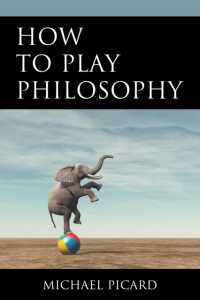- ホーム
- > 洋書
- > 英文書
- > Literary Criticism
Full Description
Neoclassical and Romantic verse cultures are often assumed to sit in an oppositional relationship to one another, with the latter amounting to a hostile reaction against the former. But there are in fact a good deal of continuities between the two movements, ones that strike at the heart of the evolution of verse forms in the period. This Element proposes that the mid-eighteenth-century poet Mark Akenside, and his hugely influential Pleasures of Imagination, represent a case study in the deep connections between Neoclassicism and Romanticism. Akenside's poem offers a vital illustration of how verse was a rival to philosophy in the period, offering a new perspective on philosophic problems of appearance, or how the world 'seems to be'. What results from this is a poetic form of knowing: one that foregrounds feeling over fact, that connects Neoclassicism and Romanticism, and that Akenside called the imagination's 'pleasures'.
Contents
Introduction, or 'The Design'; 1. Philosophic Backgrounds: Pope's Essay and Akenside; 2. 'Appearances in the World Around Us': Akenside and the Way Things Seem to Be; 3. 'There to read the transcript of Himself': Coleridge, Akenside, and the Esemplastic Imagination; 4. Akenside's Romanticism: Wordsworth, Keats, and Imaginative Pleasures; Conclusion: Things Connected.








